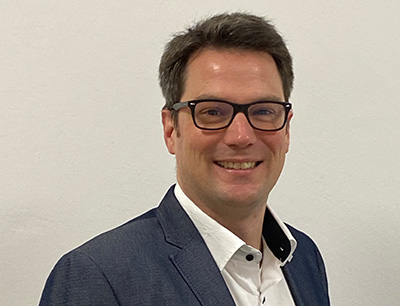
More and more consumers are considering the sustainability of their actions. But they are not alone. The chemical producer Kuraray as a company also asks how environmentally friendly their supply chain is and how much scope there is for further improvement. Therefore, the company recently arranged for a Life Cycle Assessment (LCA) to be carried out so that they can evaluate the carbon footprint of their products. In an interview, Dr. Jörg Schappel, Director Safety, Health & Sustainability at Kuraray Europe, gives an insight into the background to the LCA and the extent to which Kuraray takes sustainability on board. He also takes a look at the future of a sustainable chemical industry.
Dr. Schappel: We know that as a chemical company we have a relevant carbon footprint. Therefore, the aim of this independent assessment was to evaluate the sustainability of Kuraray products and identify scope for improvement. Above all, we wanted to find out what our own product-related CO2 emissions are. Moreover, our customers explicitly ask about our ecological footprint because they want to calculate their own carbon footprint and such information makes that more accurate. Since we did not have any expertise in this area, we contacted Sphera Solutions to provide the service. They have been involved in this side of the market for many years.
Dr. Schappel: Such assessments look at three different types of emissions known as scopes. Scope 1 comprises the carbon footprint generated by a company by combustion of fossil fuels. That is less relevant for us, because all of the energy we use is purchased. That takes us to Scope 2: these are gases relating to purchased energy that are harmful to the climate. Since we already receive the relevant information from our energy providers, we have been able to calculate Scope 2 emissions ourselves for a long time. That is why they were not included in our LCA. Scope 3 focuses principally on the main factors affecting the carbon footprint of a product and the environmental impact of manufacturing the product. That was precisely what we wanted to find out.
Dr. Schappel: We started with production in Frankfurt and Troisdorf because we wanted to get an idea of where we need to pay special attention in Germany in order to reduce our carbon footprint. So we looked at Kuraray Poval, PVB resin and PVB film. We subsequently added our production facilities in Holešov in the Czech Republic because they also produce PVB film and Sentry Glas. Therefore, all KEG production in Europe was covered.
Dr. Schappel: The LCA covered everything required to manufacture the products, including the raw materials sourced by Kuraray and their transportation. The necessary energy and the other processing aids we need were also included in the calculation, for example, the water we use in the production process and the nitrogen required as a conveying medium. The waste generated in the production processes was also taken into account. Here, a distinction is made between hazardous and non-hazardous waste and the various disposal methods, in other words, whether the waste products are incinerated or disposed of in a different way. Naturally, wastewater treatment was also taken into consideration. The aim here was to identify how much wastewater is generated and the substances contained in the wastewater we discharge.
Dr. Schappel: Quite good! For Kuraray Poval (polyvinyl alcohol/PVOH), the result is 2.47 kilograms CO2 per kilogram PVOH. That is 30 percent below the average in Sphera’s database. Since Kuraray Poval is the raw material for PVB and this in turn is the starting product for PVB film, the very good results for Poval have an effect on all the products assessed and the values are far better than those of many of our competitors.
Dr. Schappel: Wastewater treatment has a big impact on the carbon footprint of PVB resin because the wastewater load is very high and the wastewater still contains many substances. Water is used as the solvent, resulting in large quantities of wastewater every day. By contrast, we found that transport played a very small role in CO2 emissions. It surprised us, because the PVB used to manufacture our PVB film is produced in Frankfurt and then transported to Troisdorf. Nevertheless, road transport accounts for less than one percent of our carbon footprint. However, it is apparently normal in the chemical industry that transport only accounts for a small proportion of CO2 emissions.
Dr. Schappel: At the moment it is simply a snapshot of our situation. So far, we have only defined targets for Scope 1 and 2 emissions by 2030 – and naturally our target of net zero carbon emissions by 2050. We are currently calculating our Scope 3 carbon footprint and analysing what we can do to reduce it. However, it’s already clear that the main influences are raw materials and energy – regardless which product we look at. Looking at PVA, steam accounts for nearly one third of emissions.
Dr. Schappel: We should have completed the calculations by the end of 2023/early 2024. Then we want to have the values certified. After that, we can set specific targets for reducing Scope 3 emissions. Naturally, we cannot reduce our carbon footprint on our own. We need our suppliers and service-providers to help. Sustainability means working together; no-one can save the world on their own. That is one reason why we co-founded the Process4Sustainability Cluster at Höchst Industrial Park.
Dr. Schappel: The cluster is a network of industrial companies, research institutes and innovation alliances. Our common goal is to develop innovative solutions that save energy and resources to help Germany achieve its target of becoming carbon-neutral by 2045.